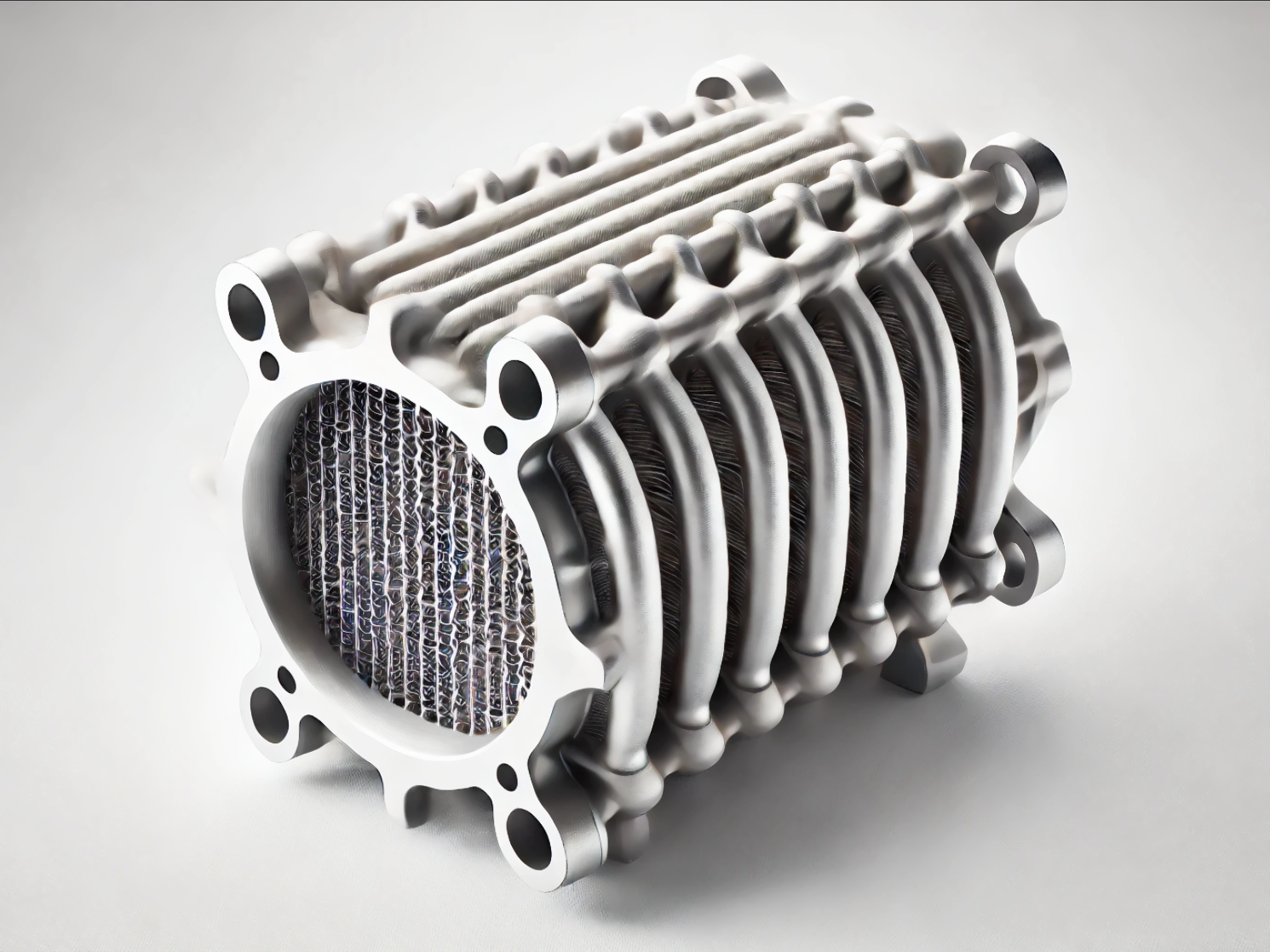Industrial Stainless Steel 3D Printing: Custom-Manufactured Heat Exchangers for Chemical Processing
Introduction
Industrial stainless steel 3D printing is revolutionizing the production of complex, corrosion-resistant heat exchangers in chemical processing environments. Through advanced metal 3D printing technologies like Selective Laser Melting (SLM) and Direct Metal Laser Sintering (DMLS), high-performance stainless steels such as SUS316L and SUS304L achieve superior corrosion resistance, complex internal structures, and optimized thermal management.
Compared to traditional welding and brazing techniques, stainless steel 3D printing for heat exchangers significantly reduces manufacturing lead times, enables highly compact and efficient geometries, and enhances the mechanical reliability of critical chemical processing equipment.
Applicable Material Matrix
Material | Ultimate Tensile Strength (MPa) | Yield Strength (MPa) | Corrosion Resistance | Max Operating Temp. (°C) | Chemical Industry Suitability |
|---|---|---|---|---|---|
570 | 485 | Excellent | 800 | Highly corrosive environments | |
520 | 220 | Very Good | 870 | Moderate chemical environments | |
1000 | 880 | Good | 565 | High-pressure systems | |
1100 | 1000 | Moderate | 600 | Mechanical reinforcement | |
650 | 450 | Moderate | 700 | Wear-resistant parts | |
700 | 500 | Moderate | 650 | Abrasion-resistant sections |
Material Selection Guide
SUS316L: With a PREN value of ~26, SUS316L provides outstanding resistance against pitting and crevice corrosion, making it ideal for compact heat exchangers handling aggressive acids, chlorides, and seawater.
SUS304L: Offers excellent general corrosion resistance and weldability, suitable for heat exchangers processing organic chemicals, solvents, and less corrosive media.
SUS15-5PH: Selected for applications requiring high mechanical strength and moderate corrosion resistance, such as high-pressure chemical reactors and compact superheaters.
SUS630/17-4PH: Ideal for structural supports and mounting systems within heat exchanger assemblies where superior mechanical strength and moderate corrosion resistance are needed.
SUS410: Applied for erosion-resistant parts within heat exchangers exposed to slurry, particulates, or corrosive gases under moderate temperatures.
SUS420: Best for reinforcing abrasive zones in heat exchangers, benefiting from its high hardness and wear resistance after hardening treatments.
Process Performance Matrix
Attribute | Stainless Steel 3D Printing Performance |
|---|---|
Dimensional Accuracy | ±0.05 mm |
Density | >99.5% Theoretical Density |
Layer Thickness | 20–60 μm |
Surface Roughness (As-Printed) | Ra 5–15 μm |
Minimum Feature Size | 0.3–0.5 mm |
Process Selection Guide
Integrated Compact Structures: 3D printing creates monolithic heat exchanger designs with intricate internal channels, eliminating traditional welding points that can corrode or leak over time.
Superior Corrosion Resistance: Grades like SUS316L offer robust resistance to harsh chemical agents, ensuring long operational life in aggressive chemical processing environments.
High Strength and Pressure Resistance: Precipitation-hardened stainless steels like SUS15-5PH and 17-4PH maintain structural stability under high pressure and thermal cycling.
Rapid Prototyping and Customization: Complex, application-specific heat exchangers can be prototyped and iterated up to 50% faster than conventional manufacturing methods.
Case In-Depth Analysis: SUS316L 3D Printed Compact Heat Exchanger for Acid Recovery Systems
A chemical processing plant required highly corrosion-resistant and compact heat exchangers for an acid recovery application involving concentrated hydrochloric acid. Utilizing our stainless steel 3D printing service with SUS316L, we produced heat exchanger cores with internal microchannel structures, achieving tensile strength of 570 MPa, full density (>99.5%), and dimensional accuracy within ±0.05 mm. The monolithic printed structure eliminated welds, reducing potential corrosion points and leakage risks by 80%. Post-processing included CNC machining for sealing surfaces and passivation to enhance acid resistance.
Industry Applications
Chemical Processing
Compact heat exchangers for acid, solvent, and gas processing.
High-pressure reactors and condensers.
Thermal management modules for chemical separation and purification systems.
Energy and Power
Heat exchangers for hydrogen production plants and battery cooling.
Steam condensers and heat recovery units.
Pharmaceutical and Biotechnology
Corrosion-resistant heating and cooling plates.
Custom process skids for controlled chemical environments.
Mainstream 3D Printing Technology Types for Stainless Steel Heat Exchanger Components
Selective Laser Melting (SLM): Best suited for high-density, precision stainless steel heat exchanger cores with complex internal designs.
Direct Metal Laser Sintering (DMLS): Ideal for producing intricate fluid management systems and corrosion-resistant structures.
Binder Jetting: Effective for prototyping large, moderately complex heat exchanger shells with post-sintering densification.
FAQs
What stainless steel grades best suit 3D printed heat exchangers in chemical processing?
How does 3D printing improve heat exchanger performance compared to traditional welding and brazing?
What post-processing methods are used for 3D printed stainless steel heat exchangers?
Can 3D-printed heat exchangers handle aggressive chemical environments like hydrochloric or sulfuric acid?
How does stainless steel 3D printing enable more compact and efficient heat exchanger designs?

